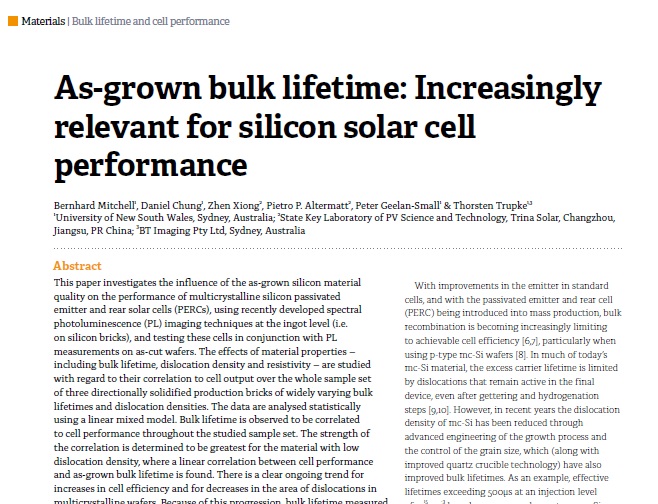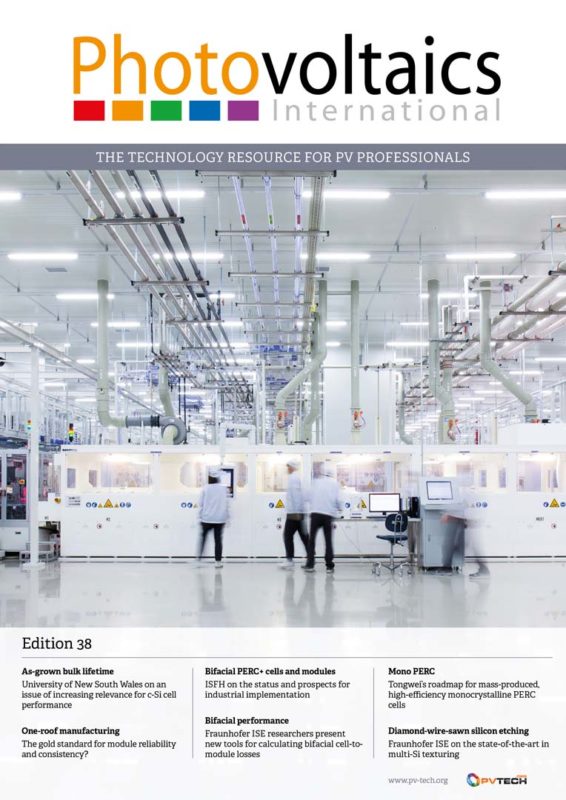By Bernhard Mitchell, University of New South Wales; Daniel Chung, is a Ph.D. student at the Australian Centre for Advanced Photovoltaics at UNSW Australia; Zhen Xiong, is the chief engineer of ingot and wafer technology at Trina Solar; Pietro P. Altermatt, is the principal scientist at the State Key Laboratory for PV Science and Technology (SKL) at Trina Solar; Peter Geelan-Small, University of New South Wales; Thorsten Trupke, is a professor at the Australian Centre for Advanced Photovoltaics at UNSW
By the end of 2017 it is expected that boron-doped multicrystalline silicon (p-type mc-Si) wafers will have been used in more than 60% of the world’s manufactured solar cells.



